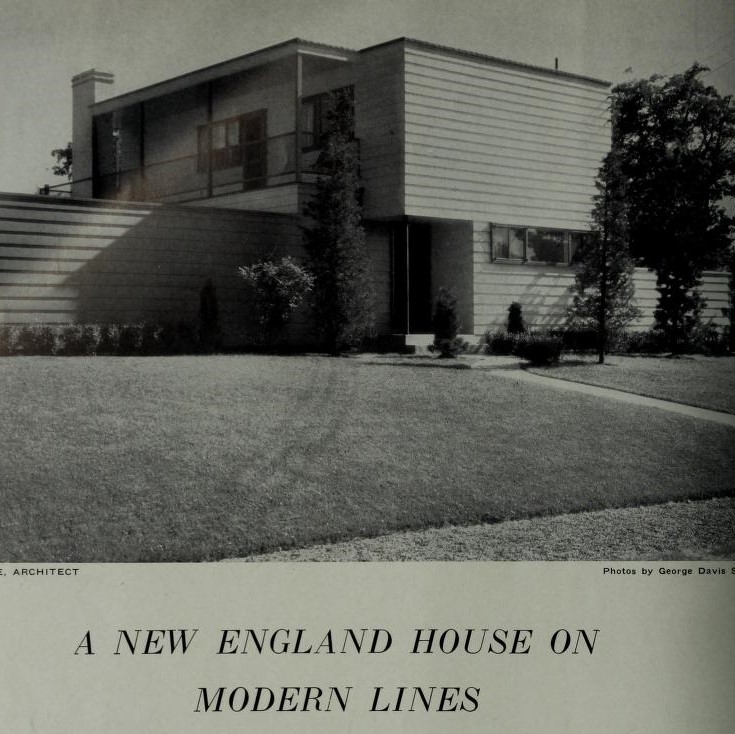One of the most delightfully shocking architectural choices in Melrose comes at 69 Burrell Street, on the corner of Lincoln. The surrounding neighborhood is almost entirely Colonial Revival, interspersed with an occasional Tudor. Emerging from lush vegetation, the stark, unadorned white clapboards of 69 Burrell Street boldly announce the arrival of Modernism in Melrose.
Modernism is one of the most easily identifiable of styles, featuring simple, horizontal lines and an absolute lack of ornamentation. This style was not simply a high-minded aesthetic choice. In the early 20th century, improvements in sanitation and medicine caused a swift rise in population, and Modernism was the architectural response to the ensuing need for housing. Modern houses could be built cheaply and efficiently using materials from the assembly line. Moreover, because Modernists believed that form should follow function, houses were designed to meet the practical needs of their residents, not to serve an abstract aesthetic ideal.
The house at 69 Burrell is a pure example of Modernist principles. It was custom-designed for this parcel in 1935 by the Swiss-American architect William Lescaze, who would later go on to become one of New York City’s most important Modernist designers. This house is one of the very few small residential commissions he ever accepted. The owner was Vincent K. Cates, a contractor who built a number of homes in Melrose, many of them designed by Royal Barry Wills.
Lescaze designed the house with the privacy and comfort of the family foremost in mind. The kitchen and the study, where work is done, face towards the noise of the passing traffic on Lincoln Street, whereas the relaxing space of the full-length living room faces the quiet and privacy of the walled-in backyard through a large casement window. The windows for the bedrooms on the second floor are high on the wall, allowing for light to enter without compromising the privacy of those within. The rear balcony originally doubled as a sleeping porch.
Modernism never did catch on in Melrose. When we pass by 69 Burrell today, it still feels like we are looking at the house of the future.






No comments:
Post a Comment